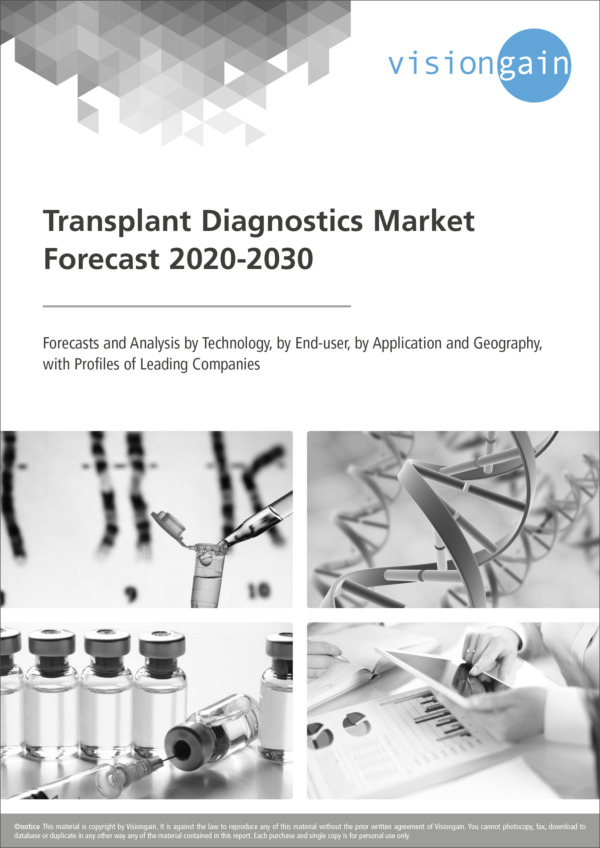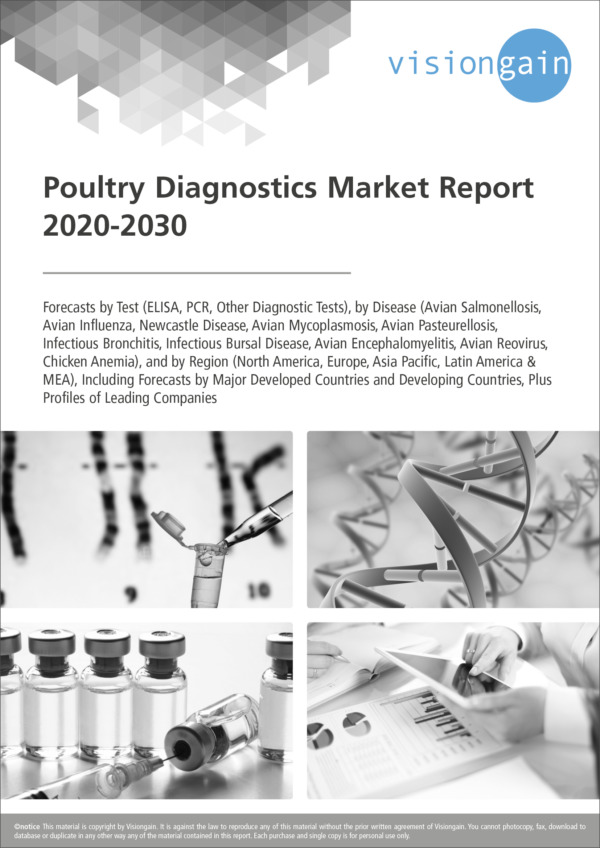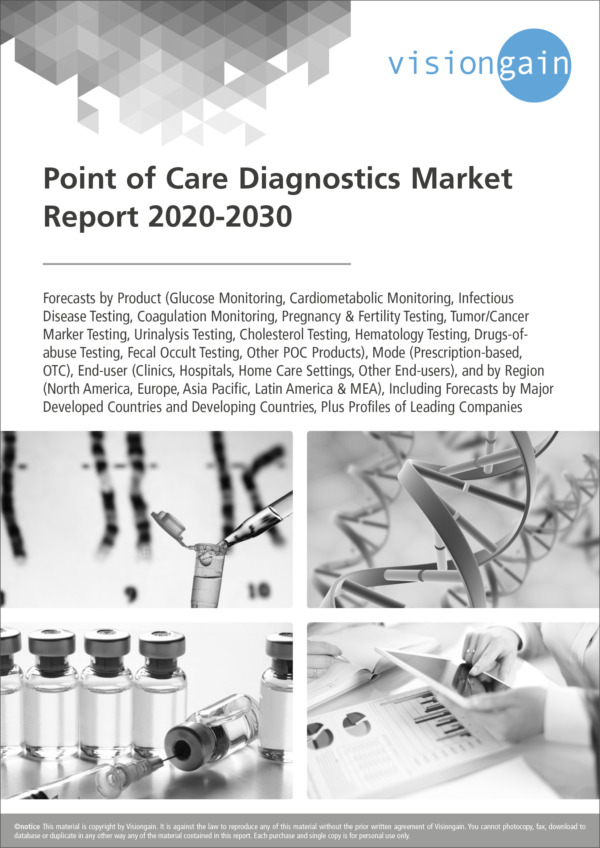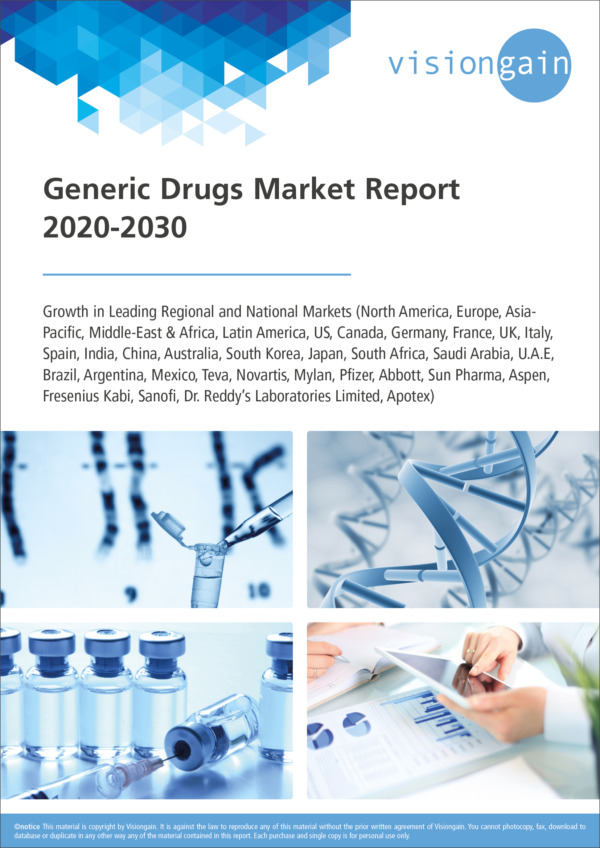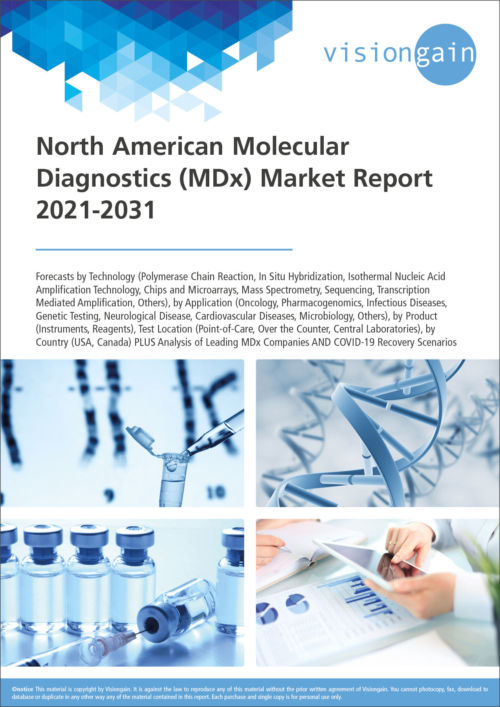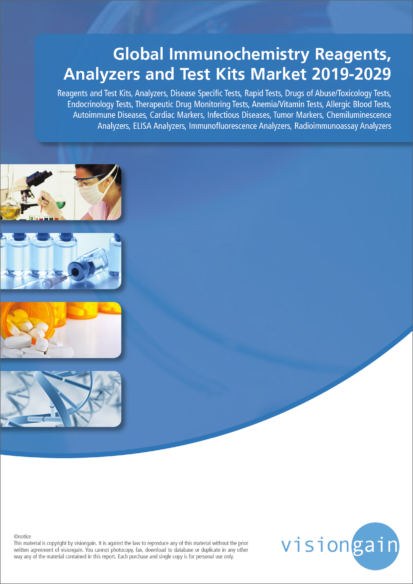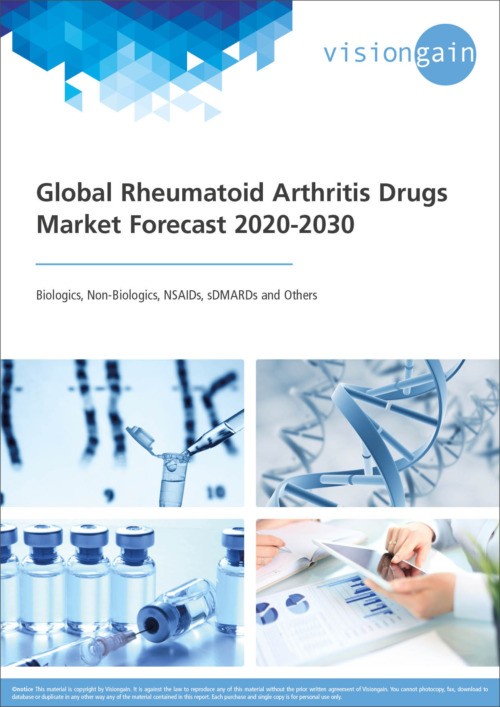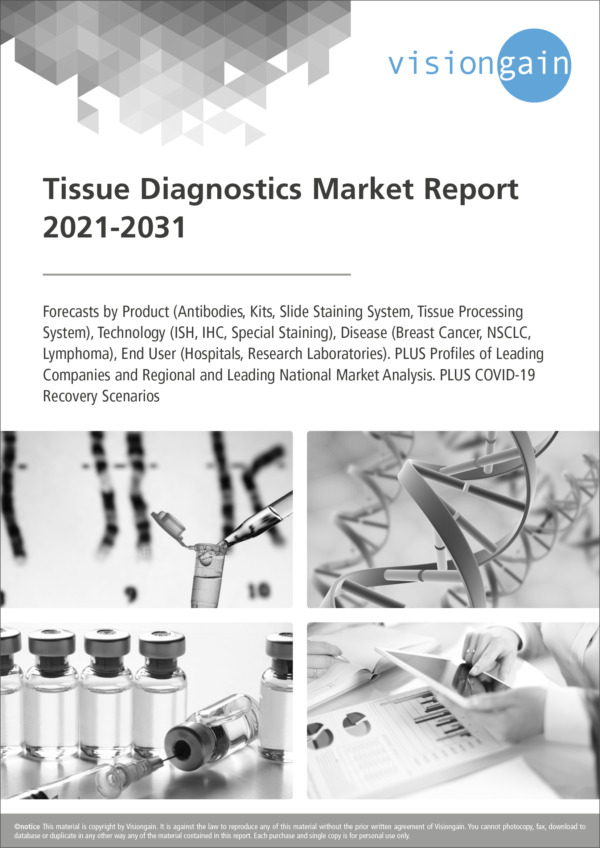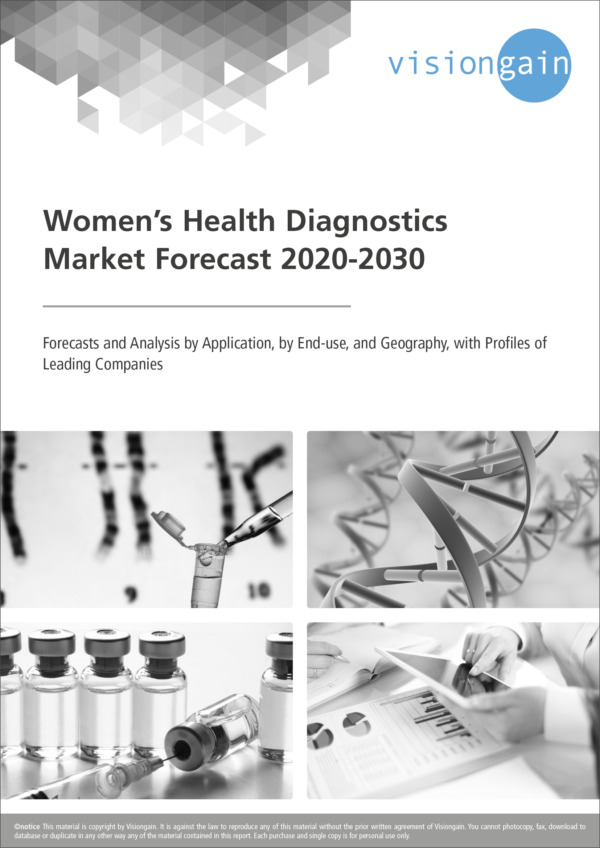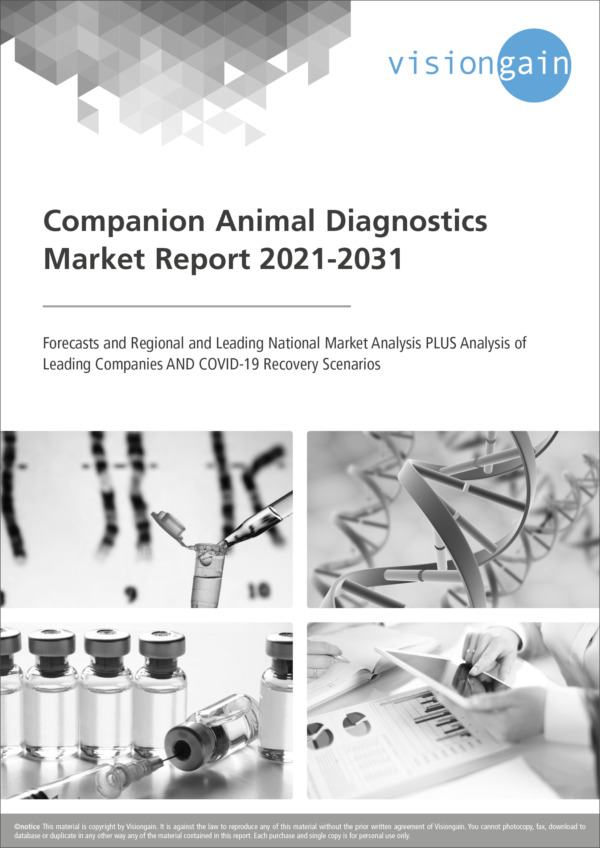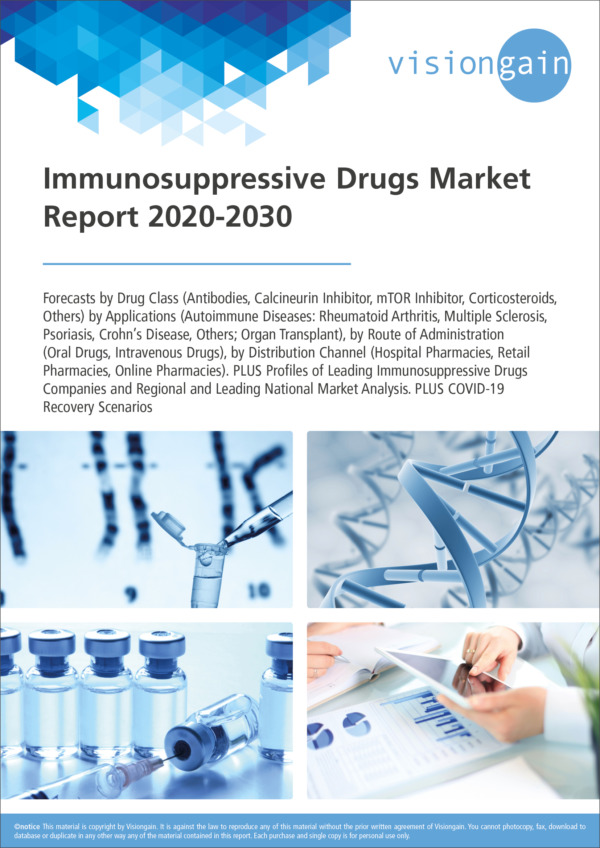According to the report published by Visiongain, the Transplant Diagnostics market is estimated to be valued at approximately USD xx million in 2019 and is expected to grow at a CAGR of around xx% between 2020 and 2030. The increasing demand for diagnostic treatment used before the procedure is a major driver of organ transplants. Transplant production was always greater than organ availability. However, the market will likely profit from extensive research and analysis in the field to bridge this gap.
A series of cellular and molecular events are initiated when an organ or tissue of one individual is transplanted into a genetically non-identical person. If no measures are taken, the graft will be dismissed. Reperfusion lesions, innate and adaptive immune responses, and thus various pathophysiological processes partially overlap with this response. The precise molecular properties and pathways of effectors of the alloantigen and host interactions are not understood. Several immune cellular and humoral immunologic events are produced that result in allograft discharge such as T, B, and NK cell, macrophage, and dendritic cells. An acute, subacute or chronic refusal may be hyperacute. Because T cells play an important role in adaptive immunity, the main focus has historically been focused on the production of immunosuppressive drugs.
To order to reduce the likelihood of over-immune suppression, which could lead to an increased risk of infection and malignancy, the immune System is essential to human body and organ exchange immunosuppression should be as limited as possible. Some things are currently approved: Treatments, e.g. quadruple immunosuppression, are often very complicated and vary over time with every person. The risk of low patient compliance is also increased with this complexity. The therapeutic margins can be very narrow and the risks of over-and under-immunosuppression are considerable. Patients with transplantations often use several other medications to create a high pharmacokinetic interaction capacity that poses problems (decreased efficacy and elevated toxicity). In low-level transplantation, i.e. lung, bowel and islet transplantation, many widely utilized immunosupressant protocols are not approved.
The various treatment settings and procedures, including the types of organ transplants (renal, liver, heart, lung) and pathophysiological types (hyperacute, acute, sub-acute, chronic and/or (steroidal) are distinguished from those used in therapy. The type of pathophysiological method (such as cellular or humoral type of rejection) is distinguished from that of allographene. There are a number of different drugs and combinations available and new agents are currently being developed. Steroid removal or complete rejection of drugs, medicines minimization and resistance development are also regarded.
Over more than four decades, organ transplantation has been a rapidly evolving area. A combination of advances in operation, immunology, pharmaceutical development and general standards of care have been achieved, where advances in the treatment and prophylaxis of infective illnesses are important for clinical outcomes. Since short-term survival of patients and graft survival and the number of graft failures attributed to acute rejection has increased, other than acute rejection factors are now more likely to account for long-term morbidity and mortality: original disease recurring and progressive chronic allograft dysfunction (CAD). In transplant recipients, the incidence of cardiovascular and malignant disease has been high and many transplant recipients die with a functioning graft.
Why you should buy Transplant Diagnostics Market Forecast 2020-2030
What is the future of the Transplant Diagnostics market? Visiongain’s comprehensive analysis contains highly quantitative content delivering solid conclusions benefiting your analysis and illustrates new opportunities and potential revenue streams helping you to remain competitive. This definitive report will benefit your decision making and help to direct your future business strategy.
Stem Cell Therapy And Personalized Medicine Are Increasing
In addition, an increase in demand for transplantation procedures creates an increasing number of patients with chronic diseases that frequently lead to organ failure. In addition, stem cell therapy and personalized medicine are increasing. This has culminated in a rapidly increasing demand for pre-procedural diagnostics. Enhanced and sophisticated diagnostic tools are essential if organ transplantation is to take risks or complexities. The technology for the next generation of sequence replacing traditional diagnostic methods, such as serology used in Human Leukocyte Antigen Typing (HLA), due to demands of high-process tools for diagnosis with increased precision.
Physicians Prefer Molecular Testing To Non-Molecular Testing
These techniques are used to ensure safe and effective procedures in pre-transplantation analyses. In the future, growth is expected to fuel factors such as growing doctors ‘ knowledge and the rapid adoption of technical devices. Physicians prefer molecular testing to non-molecular testing. Furthermore, owing to its advantages such as reliability, efficacy and reduced risk there has been a gradual shift in choice from serological testing to HLA typeing. Currently, due to several applications, the PCR-based assay segment has the largest market share. The most rapidly growing segment during the forecast period shall be the sequence-based test segment. In factors such as strict regulatory protocols, slower approval processes, poor organ reimbursement policies and social and ethical controversies across different parts of the world may have negative impacts on market growth.
Reagents And Consumables Are Expected Grow In The Services And Software Segment
Manufacturers such as reagents and consumables acquired through agreements implement diagnostic goods. Such form of product. Furthermore, their repeated purchases are the main factor that accelerates reactive and consumables. In consequence, the segment accounted for the largest share of revenues in 2016 and its dominance over the forecast period is projected to maintain. In terms of growth, reagents and consumables are expected in the services and software segment. It field can be due to the growing need for further training sessions to educate technical staff on managing and use in the application of sophisticated tools. Moreover, the growth of the segment is driven by factors such as frequent software updates and better services that market players offer.
The Biggest Share Of Revenue In 2019 Was In North America.
Main drivers involve increasing use of advanced techniques and medical tools, expanded demand of health care and the availability of skilled workers. Due to factors such as highly developed healthcare infrastructure and the availability of skilled professionals, the USA has the highest market share. In addition, expanded regional market development was powered by increasing use of customized drugs, stem cell treatment and tissues transplant. On the contrary, legislation like the Organ Transplant Act which imposes limitations on organ donor reimbursement policies adversely impacts the market. The current demand and supply gap in organ donation and the availability of heart and liver transplant alternatives is limiting the market growth.
We guarantee in this 179 page report you will receive the following key information
• View Transplant Diagnostics market forecasts and analysis from 2020-2030 to keep you ahead of your competitors and ensure you exploit key business opportunities
– The report provides detailed sales projections of the market, the competitors, and the commercial drivers and restraints allowing you to more effectively compete in the market. In addition to market forecasts from 2020-2030, our new study shows current market data, original critical analysis, and revealing insight into commercial developments
– Transplant Diagnostics revenue forecast
– Transplant Diagnostics connections forecast
• Examine 122 tables, charts, and graphs.
– Let our analysts present you with a thorough assessment of the current and future Transplant Diagnostics market prospects.
– This analysis will achieve quicker, easier understanding. Also you will gain from our analyst’s industry expertise allowing you to demonstrate your authority on the Transplant Diagnostics sector
• Discover sales predictions for the key end use submarkets from 2020-2030
– What are the dynamics of the Transplant Diagnostics industry? Which submarkets will generate the most revenue? Use our forecasts and expert insight to grow your business and give you more industry influence. Find where you can gain and how your organisation can succeed. Avoid falling behind. Stay informed about the potential for each of these Transplant Diagnostics submarkets with individual forecasts and analysis from 2020-2030.
– Technology submarket forecast 2020-2030
– End-User submarket forecast 2020-2030
– Application submarket forecast 2020-2030
• Learn about the market prospects for the leading Transplant Diagnostics market segments 2020-2030
– How will various value chain members perform over the forecast period? Discover where the highest revenue potential lies from 2020-2030, learning about how Transplant Diagnostics revenue trickles down through the various market segments. These forecasts will also reveal the competitive landscape. You will see what is happening, explaining the challenges, trends, competitors, and market opportunities. Our report reveals forecasts for the 3 leading segmentations as follows.
– Technology Revenue Forecast 2020-2030
Molecular Assay Technologies
PCR-Based Molecular Assay Technologies
Real-Time PCR
Sequence-Specific Oligonucleotide-PCR (SSO-PCR)
Sequence-Specific Primer-PCR (SSP-PCR)
Other PCR technologies
Sequencing-Based Molecular Assay Technologies
Sanger Sequencing
Next-Generation Sequencing
Other Sequencing Technologies
Non-Molecular Assay Technologies
– End-User Revenue Forecast 2020-2030
Research Laboratories and Academic Institutions revenue forecast 2020-2030
Hospitals and Transplant Centers revenue forecast 2020-2030
Others End-Users revenue forecast 2020-2030
– Application Revenue Forecast 2020-2030
Diagnostic Applications revenue forecast 2020-2030
Pre-Transplantation revenue forecast 2020-2030
Post-Transplantation revenue forecast 2020-2030
Research Applications revenue forecast 2020-2030
– Transplant Type Revenue Forecast 2020-2030
Stem Cell Transplantation revenue forecast 2020-2030
Soft Tissue Transplantation revenue forecast 2020-2030
Solid Organ Transplantation revenue forecast 2020-2030
Heart revenue forecast 2020-2030
Lung revenue forecast 2020-2030
Liver revenue forecast 2020-2030
Kidney revenue forecast 2020-2030
Pancreas revenue forecast 2020-2030
Others revenue forecast 2020-2030
• Understand the prospects for the 4 regional and the leading 12 national Transplant Diagnostics markets – where will the highest revenues and opportunities occur?
– Learn about the market potential for Transplant Diagnostics companies in the developed and developing countries, from 2019 onwards. You will see where and how opportunities exist with revealing individual market forecasts and analysis from 2020-2030 for 12 leading national markets by revenue, as well as segmented regional forecasts
• Explore the factors affecting Transplant Diagnostics product developers, and everyone within the value chain. Learn about the forces influencing market dynamics.
– Discover what the present and future outlook for business will be. Learn about the following business critical issues
– Research and development (R&D) strategy
– Technological issues and constraints.
– Competition from new product types
– Increasing specialisation by leading players
– Increasing industry consolidation.
– Advances in product quality
– Analysis of barriers to entry
• Identify who the leading companies are in the Transplant Diagnostics industry
– Our report reveals the technologies and companies which hold the greatest potential. In particular, exploring and analyzing the activities of these companies: See where the expected gains will be. View visiongain’s assessment of the prospects for established competitors, rising companies, and new market entrants. Our work explains that potential, helping you stay ahead. Gain a thorough understanding of the competitive landscape with profiles of 10 leading Transplant Diagnostics companies examining their positioning, capabilities, product portfolios, R&D activity, services, focus, strategies, M&A activity, and future outlook.
Increasing chronic illness, an aging population, the number of procedures for organ transplants, technological advances and increasing R&D activities constitute key motors for this market. But the market growth is experienced by the lack of awareness and organ scarcity about transplantation procedures. Increasing organ transplantation needs and increasing burden of chronic diseases creates potential opportunities for the transplantation market in emerging countries. With very few players competing in the international market, the global market is highly competitive. Total costs for drugs were improved by the quality and accuracy of transplant screening methods such as serology, serological and PCR dependent HLA typing. The companies thus adopt tactics such as long-term testing agreements and labs and preferential prices for large-scale acquisitions.
Leading Companies in the Global Transplant Diagnostics Market
DiaSorin S.P.A.
Linkage Biosciences
Becton, Dickinson and Company
Thermo Fisher Scientific
Abbott Laboratories
Sigma-Aldrich Corporation
Olerup SSP AB (Allenex)
Biofortuna
Biomérieux SA
Bio-Rad Laboratories
Caredx
Discover Information found nowhere else in this independent assessment of the Transplant Diagnostics market
The Transplant Diagnostics Market Forecast 2020-2030: Forecasts and Analysis By Technology, By End-User, By Application and Geography, with Profiles of Leading Companies, with Profiles of Leading Companies report provides impartial Transplant Diagnostics sector analysis. With the independent business intelligence found only in our work, you will discover where the prospects are for profit. In particular, our new research provides you with key strategic advantages: Our informed forecasts, independent and objective analysis, exclusive interviews and revealing company profiles will provide you with that necessary edge, allowing you to gain ground over your competitors.
With this report you are less likely to fall behind in knowledge or miss crucial business opportunities. You will save time and receive recognition for your market insight. See how you this report could benefit and enhance your research, analysis, company presentations and ultimately your individual business decisions and your company’s prospects.
What makes this report unique?
Visiongain’s research methodology involves an exclusive blend of primary and secondary sources providing informed analysis. This methodology allows insight into the key drivers and restraints behind market dynamics and competitive developments. The report therefore presents an ideal balance of qualitative analysis combined with extensive quantitative data including global, submarket and regional markets forecasts from 2020-2030
How the Transplant Diagnostics Market Forecast 2020-2030: Forecasts and Analysis By Technology, By End-User, By Application and and Geography, with Profiles of Leading Companies report can benefit you
Visiongain’s report is for anyone requiring analysis of the Transplant Diagnostics market. You will discover market forecasts, technological trends, predictions and expert opinion providing you with independent analysis derived from our extensive primary and secondary research. Only by purchasing this report will you receive this critical business intelligence revealing where revenue growth is likely and where the lucrative potential market prospects are. Don’t miss this key opportunity to gain a competitive advantage.
Avoid falling behind your competitors, overlooking critical business opportunities or losing industry influence. In our new report you will discover forecasts from 2020-2030 at the global, submarket, and national level. The report also assesses technologies, competitive forces and expected product pipeline developments. Read on to discover the prospects for the Transplant Diagnostics sector and find out what its future market prospects are.
To access the data contained in this document please email contactus@visiongain.com
Buy our report today Transplant Diagnostics Market Forecast 2020-2030: Forecasts and Analysis by Technology, by End-user, by Application and Geography, with Profiles of Leading Companies. Avoid missing out by staying informed – order our report now.
Visiongain is a trading partner with the US Federal Government
CCR Ref number: KD4R6
Do you have any custom requirements we can help you with? Any need for a specific country, geo region, market segment or specific company information? Contact us today, we can discuss your needs and see how we can help: sara.peerun@visiongain.com
1. Report Overview
1.1 Global Transplant Diagnostics Market 2020-2030 Market Definition
1.2 Global Transplant Diagnostics Market 2020-2030 Market Overview
1.3 Global Transplant Diagnostics Market 2020-2030 Market Segmentation
1.4 Research Scope of Transplant Diagnostics Market 2020-2030 in the Industry
1.5 Why You Should Read This Report
1.6 How This Report Delivers
1.7 Key Questions Answered by This Analytical Report
1.8 Methodology
1.8.1 Secondary Research
1.8.2 Market Evaluation & Forecasting Methodology
1.9 Frequently Asked Questions (FAQ)
1.10 Associated Visiongain Reports
1.11 About Visiongain
2. Introduction to Transplant Diagnostics Market 2020-2030 Systems Market
2.1 Market Definition
2.2 Industry Outlook
2.3 Value Chain Analysis
2.4 Industry Structure
2.5 Current Status & Trends
2.6 Demand & Supply Analysis
2.7 Trade Analysis
2.8 Price Trend Analysis
3. Global Transplant Diagnostics Market 2020-2030 Market Analysis
3.1 PEST Analysis of the Transplant Diagnostics Market 2020-2030 Market
3.2 Expert Opinion
3.2.1 Primary Correspondents
3.3 Market Outlook
3.4 Drivers & Restraints
3.5 Dominant Region/Country
3.6 Market Scenario
3.7 Overall Growth Rate, Globally
3.8 SWOT Analysis of the Transplant Diagnostics Market 2020-2030 Market
3.8.1 Strengths
3.8.2 Weaknesses
3.8.3 Opportunities
3.8.4 Threats
3.9 Porter’s Five Forces Analysis
3.9.1 Competitive Rivalry
3.9.2 Supplier Power
3.9.3 Buyer Power
3.9.4 Threat of Substitute
3..9.5 Threat of New Entrant
4. Transplant Diagnostics Market 2020-2030: Global Market Analysis by Segments
4.1 Global Transplant Diagnostics Market 2020-2030 Market Forecast, by Technology 2020-2030
4.1.1 Technology Overview
4.1.2 Molecular Assay Technologies Market Forecast, 2020-2030
4.1.2.1 PCR-Based Molecular Assay Technologies Market Forecast, 2020-2030
4.1.2.1.1 Real-Time PCR Market Forecast, 2020-2030
4.1.2.1.2 Sequence-Specific Oligonucleotide-PCR (SSO-PCR) Market Forecast, 2020-2030
4.1.2.1.3 Sequence-Specific Primer-PCR (SSP-PCR)Market Forecast, 2020-2030
4.1.2.1.4 Other PCR technologies Market Forecast, 2020-2030
4.1.3 Sequencing-Based Molecular Assay Technologies Market Forecast, 2020- 2030
4.1.3.1 Sanger Sequencing Market Forecast, 2020-2030
4.1.3.2 Next-Generation Sequencing Market Forecast, 2020-2030
4.1.3.3 Other Sequencing Technologies Market Forecast, 2020-2030
4.1.3.4 Non-Molecular Assay Technologies Market Forecast, 2020-2030
4.1.4 Other Technology Market Forecast, 2020-2030
4.2 Global Transplant Diagnostics Market 2020-2030 Market Forecast, by Application 2020-2030
4.2.1 Application Overview
4.2.2 Diagnostic Applications Market Forecast, 2020-2030
4.2.2.1 Pre-Transplantation Market Forecast, 2020-2030
4.2.2.2 Post-Transplantation Market Forecast, 2020-2030
4.2.3 Research Applications Market Forecast, 2020-2030
4.2.4 Other Application Market Forecast, 2020-2030
4.3 Global Transplant Diagnostics Market 2020-2030 Market Forecast, by Transplant Type 2020-2030
4.3.1 Transplant Type Overview
4.3.2 Stem Cell Transplantation Market Forecast, 2020-2030
4.3.3 Soft Tissue Transplantation Market Forecast, 2020-2030
4.3.4 Solid Organ Transplantation Market Forecast, 2020-2030
4.3.4.1 Heart Market Forecast, 2020-2030
4.3.4.2 Lung Market Forecast, 2020-2030
4.3.4.3 Liver Market Forecast, 2020-2030
4.3.4.4 Kidney Market Forecast, 2020-2030
4.3.4.5 Pancreas Market Forecast, 2020-2030
4.3.4.6 Others Market Forecast, 2020-2030
4.3.5 Other Transplant Type Market Forecast, 2020-2030
4.4 Global Transplant Diagnostics Market 2020-2030 Market Forecast, by End-User 2020-2030
4.4.1 End-User Overview
4.4.2 Research Laboratories and Academic Institutions Market Forecast, 2020-2030
4.4.3 Hospitals and Transplant Centers Market Forecast, 2020-2030
4.4.4 Other End-User Market Forecast, 2020-2030
4.5 Global Transplant Diagnostics Market 2020-2030 Market Forecast, by Product Type 2020-2030
4.5.1 Product Type Overview
4.5.2 Reagents & Consumables Market Forecast, 2020-2030
4.5.3 Instruments Market Forecast, 2020-2030
4.5.4 Software and Services Market Forecast, 2020-2030
4.5.5 Other Product Type Market Forecast, 2020-2030
5. Leading Regions in Transplant Diagnostics Market 2020-2030 Market 2020-2030
5.1 Regional Overview
5.1.1 North America
5.1.2 Europe
5.1.3 Asia Pacific
5.1.4 LAMEA
5.1.5 Leading Countries/ Regions
5.2 North America Transplant Diagnostics Market 2020-2030 Market Forecast, 2020-2030
5.2.1 North America Transplant Diagnostics Market 2020-2030 Submarket, By Technology Forecast 2020-2030
5.2.2 North America Transplant Diagnostics Market 2020-2030 Submarket, By Application Forecast 2020-2030
5.2.3 North America Transplant Diagnostics Market 2020-2030 Submarket, By Transplant Type Forecast 2020-2030
5.2.4 North America Transplant Diagnostics Market 2020-2030 Submarket, By Country Forecast 2020-2030
5.2.4.1 U.S. Transplant Diagnostics Market 2020-2030 Market, Forecast 2020-2030
5.2.4.2 Canada Transplant Diagnostics Market 2020-2030 Market, Forecast 2020-2030
5.2.4.3 Mexico Transplant Diagnostics Market 2020-2030 Market, Forecast 2020-2030
5.3 Europe Transplant Diagnostics Market 2020-2030 Market Forecast, 2020-2030
5.3.1 Europe Transplant Diagnostics Market 2020-2030 Submarket, By Technology Forecast 2020-2030
5.3.2 Europe Transplant Diagnostics Market 2020-2030 Submarket, By Application Forecast 2020-2030
5.3.3 Europe Transplant Diagnostics Market 2020-2030 Submarket, By Transplant Type Forecast 2020-2030
5.3.4 Europe Transplant Diagnostics Market 2020-2030 Submarket, By Country Forecast 2020-2030
5.3.4.1 U.K. Transplant Diagnostics Market 2020-2030 Market, Forecast 2020-2030
5.3.4.2 Germany Transplant Diagnostics Market 2020-2030 Market, Forecast 2020-2030
5.3.4.3 France Transplant Diagnostics Market 2020-2030 Market, Forecast 2020-2030
5.3.4.4 Italy Transplant Diagnostics Market 2020-2030 Market, Forecast 2020-2030
5.3.4.5 Spain Transplant Diagnostics Market 2020-2030 Market, Forecast 2020-2030
5.3.4.6 The Netherlands Transplant Diagnostics Market 2020-2030 Market, Forecast 2020-2030
5.3.4.7 Rest of Europe Transplant Diagnostics Market 2020-2030 Market, Forecast 2020-2030
5.4 Asia-Pacific Transplant Diagnostics Market 2020-2030 Market Forecast, 2020-2030
5.4.1 Asia-Pacific Transplant Diagnostics Market 2020-2030 Submarket, By Technology Forecast 2020-2030
5.4.2 Asia-Pacific Transplant Diagnostics Market 2020-2030 Submarket, By Application Forecast 2020-2030
5.4.3 Asia-Pacific Transplant Diagnostics Market 2020-2030 Submarket, By Transplant Type Forecast 2020-2030
5.4.4 Asia-Pacific Transplant Diagnostics Market 2020-2030 Submarket, By Country Forecast 2020-2030
5.4.4.1 China Transplant Diagnostics Market 2020-2030 Market, Forecast 2020-2030
5.4.4.2 India Transplant Diagnostics Market 2020-2030 Market, Forecast 2020-2030
5.4.4.3 Japan Transplant Diagnostics Market 2020-2030 Market, Forecast 2020-2030
5.4.4.4 Korea Transplant Diagnostics Market 2020-2030 Market, Forecast 2020-2030
5.4.4.5 Indonesia Transplant Diagnostics Market 2020-2030 Market, Forecast 2020-2030
5.4.4.6 Australia Transplant Diagnostics Market 2020-2030 Market, Forecast 2020-2030
5.4.4.7 Rest of Asia-Pacific Transplant Diagnostics Market 2020-2030 Market, Forecast 2020-2030
5.5 Rest of World Transplant Diagnostics Market 2020-2030 Market Forecast, 2020-2030
5.5.1 Rest of World Transplant Diagnostics Market 2020-2030 Submarket, By Technology Forecast 2020-2030
5.5.2 Rest of World Transplant Diagnostics Market 2020-2030 Submarket, By Application Forecast 2020-2030
5.5.3 Rest of World Transplant Diagnostics Market 2020-2030 Submarket, By Transplant Type Forecast 2020-2030
6. Leading Companies in The Transplant Diagnostics Market 2020-2030 Market
6.1 Thermo Fisher Scientific
6.1.1 Thermo Fisher Scientific Overview
6.1.2 Analysis of Thermo Fisher Scientific Products and Services
6.1.3 Thermo Fisher Scientific Primary Market Competitors 2019
6.1.4 Thermo Fisher Scientific Key Developments
6.2 Abbott Laboratories
6.2.1 Abbott Laboratories Company Overview
6.2.2 Analysis of Abbott Laboratories Products and Services
6.2.3 Abbott Laboratories Primary Market Competitors 2019
6.2.4 Abbott Laboratories Key Developments
6.3 Sigma-Aldrich Corporation
6.3.1 Sigma-Aldrich Corporation Company Overview
6.3.2 Analysis of Sigma-Aldrich Corporation Products and Services
6.3.3 Sigma-Aldrich Corporation Primary Market Competitors 2019
6.3.4 Sigma-Aldrich Corporation Key Developments
6.4 Olerup SSP AB (Allenex)
6.4.1 Olerup SSP AB (Allenex) Company Overview
6.4.2 Analysis of Olerup SSP AB (Allenex) Products and Services
6.4.3 Olerup SSP AB (Allenex) Primary Market Competitors 2019
6.4.4 Olerup SSP AB (Allenex) Key Developments
6.5 DiaSorin S.P.A.
6.5.1 DiaSorin S.P.A. Company Overview
6.5.2 Analysis of DiaSorin S.P.A. Products and Services
6.5.3 DiaSorin S.P.A. Primary Market Competitors 2019
6.5.4 DiaSorin S.P.A. Key Developments
6.6 Linkage Biosciences
6.6.1 Linkage Biosciences Company Overview
6.6.2 Analysis of Linkage Biosciences Products and Services
6.6.3 Linkage Biosciences Primary Market Competitors 2019
6.6.4 Linkage Biosciences Key Developments
6.7 Becton, Dickinson and Company
6.6.1 Becton, Dickinson and Company Company Overview
6.6.2 Analysis of Becton, Dickinson and Company Products and Services
6.6.3 Becton, Dickinson and Company Primary Market Competitors 2019
6.6.4 Becton, Dickinson and Company Key Developments
6.8 Biofortuna
6.8.1 Biofortuna Company Overview
6.8.2 Analysis of Biofortuna Products and Services
6.8.3 Biofortuna Primary Market Competitors 2019
6.8.4 Biofortuna Key Developments
6.9 Biomérieux SA
6.9.1 Biomérieux SA Company Overview
6.9.2 Analysis of Biomérieux SA Products and Services
6.9.3 Biomérieux SA Primary Market Competitors 2019
6.9.4 Biomérieux SA Key Developments
6.10 Bio-Rad Laboratories
6.10.1 Bio-Rad Laboratories Company Overview
6.10.2 Analysis of Bio-Rad Laboratories Products and Services
6.10.3 Bio-Rad Laboratories Primary Market Competitors 2019
6.10.4 Bio-Rad Laboratories Key Developments
7. Conclusions and Recommendations
7.1. Key Research Findings
7.2. Conclusion by Geography
7.3. Conclusion by Solution Type
7.4. Strategic Recommendations
8. Glossary
Associated Visiongain Reports
Visiongain Report Sales Order Form
Appendix A
About Visiongain
Appendix B
Visiongain Report Evaluation Form
List of Figures
Figure 1.1 Global Transplant Diagnostics Market 2020-2030 Market Segmentation
Figure 2.1 Transplant Diagnostics Market 2020-2030 Value Chain Analysis
Figure 3.1 Transplant Diagnostics Market 2020-2030 Supply-Demand Analysis
Figure 4.1 Global Transplant Diagnostics Market 2020-2030 Forecast 2020-2030 ($billion, AGR %)
Figure 4.2 Global Transplant Diagnostics Market 2020-2030 Market Forecast 2020-2030
Figure 4.3 Global Transplant Diagnostics Market 2020-2030 Submarket Forecast by 2020-2030 ($ billion)
Figure 4.4 Global Transplant Diagnostics Market 2020-2030 Market By Technology Share Forecast 2019, 2025, 2030 (% Share)
Figure 4.19 Global Transplant Diagnostics Market 2020-2030 by Submarket By Technology Forecast 2020-2030 ($ million)
Figure 4.20 Global Transplant Diagnostics Market 2020-2030 Market, by Share Forecast 2019, 2025, 2030 (% Share)
Figure 4.21 Transplant Diagnostics Market 2020-2030 Market, By Application Forecast 2020-2030 ($billion, AGR%)
Figure 4.23 Transplant Diagnostics Market 2020-2030 Market, By Transplant Type System Forecast 2020-2030 ($billion, AGR%)
Figure 4.25 Transplant Diagnostics Market 2020-2030 Market, By Technology Forecast 2020-2030 ($billion, AGR%)
Figure 4.27 Transplant Diagnostics Market 2020-2030 Market, By Application Forecast 2020-2030 ($billion, AGR%)
Figure 5.1 Regional/Country Transplant Diagnostics Market 2020-2030 Market, by 2020-2030
Figure 5.3 Leading Country/Regional Transplant Diagnostics Market 2020-2030 Market Share, by 2020
Figure 5.4 Leading Country/Regional Transplant Diagnostics Market 2020-2030 Market Share, by 2025
Figure 5.5 Leading Country/Regional Transplant Diagnostics Market 2020-2030 Market Share, by 2030
Figure 5.6 Europe Transplant Diagnostics Market 2020-2030 Market Forecast 2020-2030 ($billion, AGR%)
Figure 5.7 Europe Transplant Diagnostics Market 2020-2030 Market, by Forecast 2020-2030
Figure 5.8 Europe Transplant Diagnostics Market 2020-2030 Submarket, By Technology Forecast 2020-2030
Figure 5.9 Europe Transplant Diagnostics Market 2020-2030 Submarket , By Application Forecast 2020-2030
Figure 5.10 Europe Transplant Diagnostics Market 2020-2030 Submarket , By Country Forecast 2020-2030
Figure 5.11 Europe Transplant Diagnostics Market 2020-2030 Submarket , By Transplant Type 2020-2030 ($billion, AGR%)
Figure 5.10 North America Transplant Diagnostics Market 2020-2030 Market Forecast 2020-2030 ($billion, AGR%)
Figure 5.11 North America Transplant Diagnostics Market 2020-2030 Market, by Forecast 2020-2030
Figure 5.12 North America Transplant Diagnostics Market 2020-2030 Submarket, By Technology Forecast 2020-2030
Figure 5.13 North America Transplant Diagnostics Market 2020-2030 Submarket , By Application Forecast 2020-2030
Figure 5.14 North America Transplant Diagnostics Market 2020-2030 Submarket , By Transplant Type Forecast 2020-2030
Figure 5.13 North America Transplant Diagnostics Market 2020-2030 Submarket , By Country Forecast 2020-2030
Figure 5.14 Asia-Pacific Transplant Diagnostics Market 2020-2030 Market Forecast 2020-2030 ($billion , AGR%)
Figure 5.15 Asia-Pacific Transplant Diagnostics Market 2020-2030 Market, by Forecast 2020-2030
Figure 5.16 Asia-Pacific Transplant Diagnostics Market 2020-2030 Submarket, By Technology Forecast 2020-2030
Figure 5.17 Asia-Pacific Transplant Diagnostics Market 2020-2030 Submarket , By Country Forecast 2020-2030
Figure 5.17 Asia-Pacific Transplant Diagnostics Market 2020-2030 Submarket , By Transplant Type Forecast 2020-2030
Figure 5.18 Rest of World Transplant Diagnostics Market 2020-2030 Market Forecast 2020-2030 ($billion, AGR%)
Figure 5.19 Rest of World Transplant Diagnostics Market 2020-2030 Market, by Forecast 2020-2030
Figure 5.20 Rest of World Transplant Diagnostics Market 2020-2030 Submarket, By Technology Forecast 2020-2030
Figure 5.21 Rest of World Transplant Diagnostics Market 2020-2030 Submarket , By Application Forecast 2020-2030
Figure 5.21 Rest of World Transplant Diagnostics Market 2020-2030 Submarket , By Transplant Type Forecast 2020-2030
Figure 6.1 3M Total Company Sales 2013-2019 (US$ million, AGR %)
Figure 6.2 Abbott Laboratories Total Company Sales 2013-2019 (US$ million, AGR %)
Figure 6.3 Sigma-Aldrich Corporation Total Company Sales 2013-2019 (US$ Bn, AGR %)
Figure 6.6 Olerup SSP AB (Allenex) Company Sales 2013-2019 (US$ bn, AGR %)
Figure 6.7 Olerup SSP AB (Allenex) Revenue % Share, by Transplant Type Segment, 2019
Figure 6.8 Olerup SSP AB (Allenex) Revenue % Share, by Geographical Trade, 2019
Figure 6.9 Olerup SSP AB (Allenex) Revenue % Share, by Business Segment, 2019
Figure 6.10 DiaSorin S.P.A. Revenue % Share, by Geographic Segment, 2019
Figure 6.11 Linkage Biosciences Company Total Company Sales 2013-2019 (US$ million, AGR %)
Figure 6.12 Becton, Dickinson and Company Total Company Sales 2013-2019 (US$ million, AGR %)
Figure 6.13 Becton, Dickinson and Company Revenue % Share, by Regional Segment, 2019
Figure 6.14 Biofortuna Total Company Sales 2013-2019 (US$ million, AGR %)
Figure 6.15 Biofortuna Revenue % Share, by Regional Segment, 2019
Figure 6.16 Biofortuna Revenue % Share, by Business Segment, 2019
Figure 6.17 Biomérieux SA Total Company Sales 2013-2019 (US$ bn, AGR %)
Figure 6.18 Bio-Rad Laboratories Total Company Revenue 2013-2019 (US$ bn, AGR %)
Figure 6.19 Bio-Rad Laboratories Company Sales 2014-2019 (US$ bn, AGR %)
Figure 6.20 Bio-Rad Laboratories Revenue % Share, by Business Segment, 2019
List of Tables
Table 1.0 Research Scope
Table 4.1 Global Transplant Diagnostics Market 2020-2030 Market Forecast 2020-2030 ($Bn, AGR %, CAGR %)
Table 4.2 Global Transplant Diagnostics Market 2020-2030 Submarket, By Technology Forecast 2020-2030 ($billion, AGR %)
Table 4.3 Global Transplant Diagnostics Market 2020-2030 Submarket, By Transplant Type Forecast 2020-2030 ($billion, AGR %)
Table 5.1 Global Transplant Diagnostics Market 2020-2030 Market, by Country/Region Forecast 2020-2030 ($billion, AGR %)
Table 5.3 Europe Transplant Diagnostics Market 2020-2030 Market Forecast 2020-2030 ($billion, , AGR %, CAGR %)
Table 5.4 Europe Transplant Diagnostics Market 2020-2030 Submarket, By Technology Forecast 2020-2030 ($billion, AGR %)
Table 5.5 Europe Transplant Diagnostics Market 2020-2030 Submarket, By Application Forecast 2020-2030 ($billion, AGR %)
Table 5.6 North America Transplant Diagnostics Market 2020-2030 Market Submarket, By Transplant Type Forecast 2020-2030 ($billion, , AGR %, CAGR %)
Table 5.7 North America Transplant Diagnostics Market 2020-2030 Submarket, By Technology Forecast 2020-2030 ($billion, AGR %)
Table 5.8 North America Transplant Diagnostics Market 2020-2030 Submarket, By Application Forecast 2020-2030 ($billion, AGR %)
Table 5.9 Asia-Pacific Transplant Diagnostics Market 2020-2030 Market Forecast 2020-2030 ($billion, , AGR %, CAGR %)
Table 5.10 Asia-Pacific Transplant Diagnostics Market 2020-2030 Submarket, By Technology Forecast 2020-2030 ($billion, AGR %)
Table 5.11 Asia-Pacific Transplant Diagnostics Market 2020-2030 Submarket, By Application Forecast 2020-2030 ($billion, AGR %)
Table 5.12 Rest of World Transplant Diagnostics Market 2020-2030 Market Submarket, By Transplant Type Forecast 2020-2030 ($billion, , AGR %, CAGR %)
Table 5.13 Rest of World Transplant Diagnostics Market 2020-2030 Submarket, By Technology Forecast 2020-2030 ($billion, AGR %)
Table 5.14 Rest of World Transplant Diagnostics Market 2020-2030 Submarket, By Application Forecast 2020-2030 ($billion, AGR %)
Table 6.1 3M Profile 2019 (Market Entry, Public/Private, Headquarters, Geography, Key Market, Listed on, Products/Services
Table 6.2 3M Profile 2019 (CEO, Total Company Sales US$m, Sales in the Market US$m, Share of Company Sales from MHealth Market %, Net Income / Loss US$m, Strongest Business Region, Business Segment in the Market, Submarket Involvement, HQ, Founded, No. of Employees, Website)
Table 6.3 3M Products and Services (Product/Service, Segment)
Table 6.4 3M Total Company Sales 2015-2019 (US$billion, AGR %)
Table 6.5 3M Total Company Recent Development 2015-2019
Table 6.6 Abbott Laboratories Profile 2019 (CEO, Total Company Sales US$m, Sales in the Market US$m, Share of Company Sales from MHealth Market %, Net Income / Loss US$m, Strongest Business Region, Business Segment in the Market, Submarket Involvement, HQ, Founded, No. of Employees, Website)
Table 6.7 Abbott Laboratories Products and Services (Product/Service, Segment)
Table 6.8 Abbott Laboratories Total Company Sales 2015-2019 (US$billion, AGR %)
Table 6.9 Abbott Laboratories Total Company Recent Development 2015-2019
Table 6.10 Sigma-Aldrich Corporation Profile 2019 (CEO, Total Company Sales US$m, Sales in the Market US$m, Share of Company Sales from MHealth Market %, Net Income / Loss US$m, Strongest Business Region, Business Segment in the Market, Submarket Involvement, HQ, Founded, No. of Employees, Website)
Table 6.11 Sigma-Aldrich Corporation Products and Services (Product/Service, Segment)
Table 6.12 Sigma-Aldrich Corporation Total Company Sales 2015-2019 (US$billion, AGR %)
Table 6.13 Sigma-Aldrich Corporation Total Company Recent Development 2015-2019
Table 6.14 Olerup SSP AB (Allenex) Profile 2019 (CEO, Total Company Sales US$m, Sales in the Market US$m, Share of Company Sales from MHealth Market %, Net Income / Loss US$m, Strongest Business Region, Business Segment in the Market, Submarket Involvement, HQ, Founded, No. of Employees, Website)
Table 6.15 Olerup SSP AB (Allenex) Products and Services (Product/Service, Segment)
Table 6.16 Olerup SSP AB (Allenex) Total Company Sales 2015-2019 (US$billion, AGR %)
Table 6.17 Olerup SSP AB (Allenex) Total Company Recent Development 2015-2019
Table 6.18 DiaSorin S.P.A. Profile 2019 (CEO, Total Company Sales US$m, Sales in the Market US$m, Share of Company Sales from MHealth Market %, Net Income / Loss US$m, Strongest Business Region, Business Segment in the Market, Submarket Involvement, HQ, Founded, No. of Employees, Website)
Table 6.19 DiaSorin S.P.A. Products and Services (Product/Service, Segment)
Table 6.20 DiaSorin S.P.A. Total Company Sales 2015-2019 (US$billion, AGR %)
Table 6.21 DiaSorin S.P.A. Total Company Recent Development 2015-2019
Table 6.22 Linkage Biosciences Profile 2019 (CEO, Total Company Sales US$m, Sales in the Market US$m, Share of Company Sales from MHealth Market %, Net Income / Loss US$m, Strongest Business Region, Business Segment in the Market, Submarket Involvement, HQ, Founded, No. of Employees, Website)
Table 6.23 Linkage Biosciences Products and Services (Product/Service, Segment)
Table 6.24 Linkage Biosciences Total Company Sales 2015-2019 (US$billion, AGR %)
Table 6.25 Linkage Biosciences Total Company Recent Development 2015-2019
Table 6.26 Becton, Dickinson and Company Profile 2019 (CEO, Total Company Sales US$m, Sales in the Market US$m, Share of Company Sales from MHealth Market %, Net Income / Loss US$m, Strongest Business Region, Business Segment in the Market, Submarket Involvement, HQ, Founded, No. of Employees, Website)
Table 6.27 Becton, Dickinson and Company Products and Services (Product/Service, Segment)
Table 6.28 Becton, Dickinson and Company Total Company Sales 2015-2019 (US$billion, AGR %)
Table 6.29 Becton, Dickinson and Company Total Company Recent Development 2015-2019
Table 6.30 Biofortuna Profile 2019 (CEO, Total Company Sales US$m, Sales in the Market US$m, Share of Company Sales from MHealth Market %, Net Income / Loss US$m, Strongest Business Region, Business Segment in the Market, Submarket Involvement, HQ, Founded, No. of Employees, Website)
Table 6.31 Biofortuna Products and Services (Product/Service, Segment)
Table 6.32 Biofortuna Total Company Sales 2015-2019 (US$billion, AGR %)
Table 6.33 Biofortuna Total Company Recent Development 2015-2019
Table 6.34 Biomérieux SA Profile 2019 (CEO, Total Company Sales US$m, Sales in the Market US$m, Share of Company Sales from MHealth Market %, Net Income / Loss US$m, Strongest Business Region, Business Segment in the Market, Submarket Involvement, HQ, Founded, No. of Employees, Website)
Table 6.35 Biomérieux SA Products and Services (Product/Service, Segment)
Table 6.36 Biomérieux SA Total Company Sales 2015-2019 (US$billion, AGR %)
Table 6.37 Biomérieux SA Total Company Recent Development 2015-2019
Table 6.38 Bio-Rad Laboratories Profile 2019 (CEO, Total Company Sales US$m, Sales in the Market US$m, Share of Company Sales from MHealth Market %, Net Income / Loss US$m, Strongest Business Region, Business Segment in the Market, Submarket Involvement, HQ, Founded, No. of Employees, Website)
Table 6.39 Bio-Rad Laboratories Products and Services (Product/Service, Segment)
Table 6.40 Bio-Rad Laboratories Total Company Sales 2015-2019 (US$billion, AGR %)
Table 6.41 Bio-Rad Laboratories Total Company Recent Development 2015-2019
Top Companies
Abbott Laboratories
Becton, Dickinson and Company
Bio-Rad Laboratories
Biofortuna
Biomérieux SA
Caredx
DiaSorin S.P.A.
Linkage Biosciences
Olerup SSP AB (Allenex)
Sigma-Aldrich Corporation
Thermo Fisher Scientific
Other Companies
Admera Health
Affymetrix, Inc.
F. Hoffman-La Roche Limited
Gendx
Genome Diagnostics B.V
Hologic
Illumina
Immucor
IVD Holdings, Inc
Luminex
Medtronic PLC
Merck KGaA
New York Blood Center
Omixon
Qiagen
Roche Diagnostics
The Sequencing Center
Zimmer Biomet
